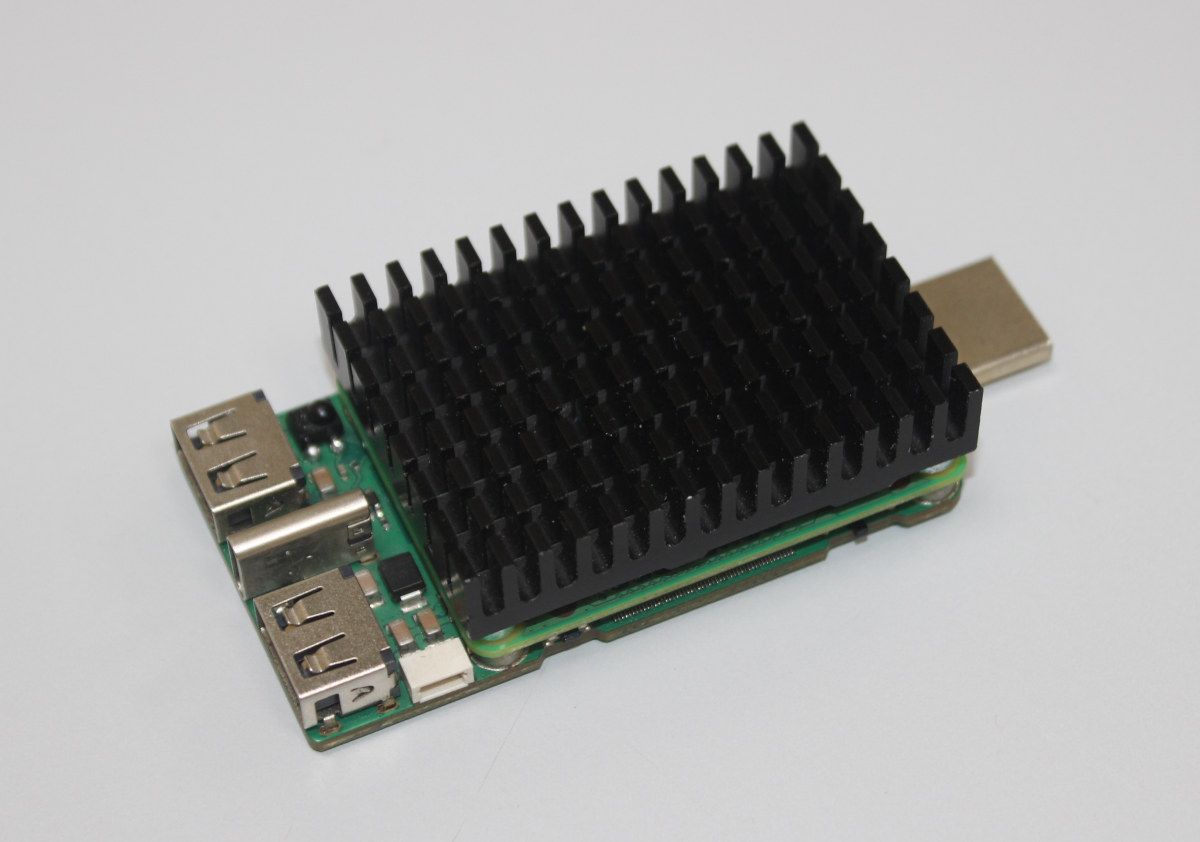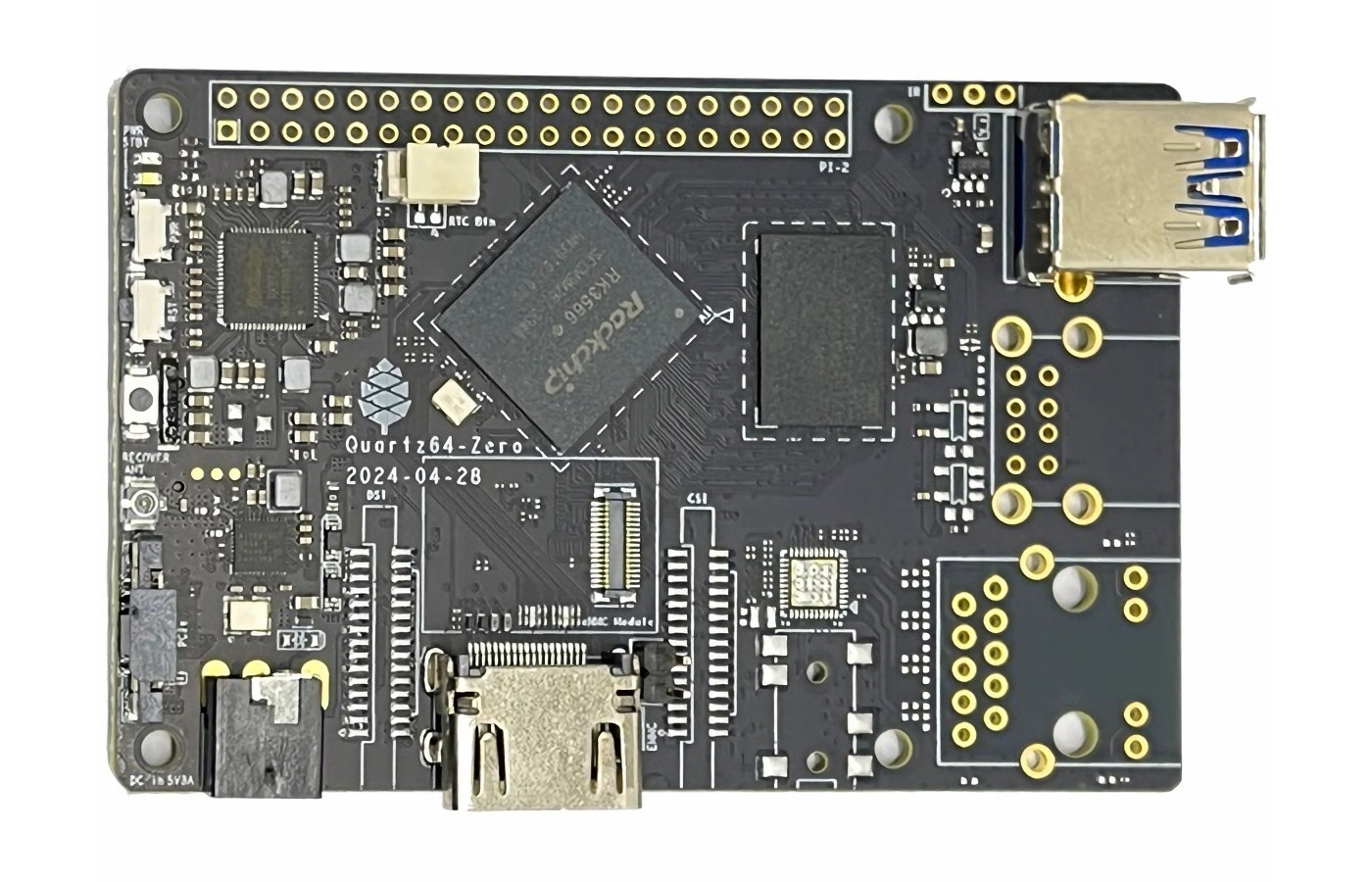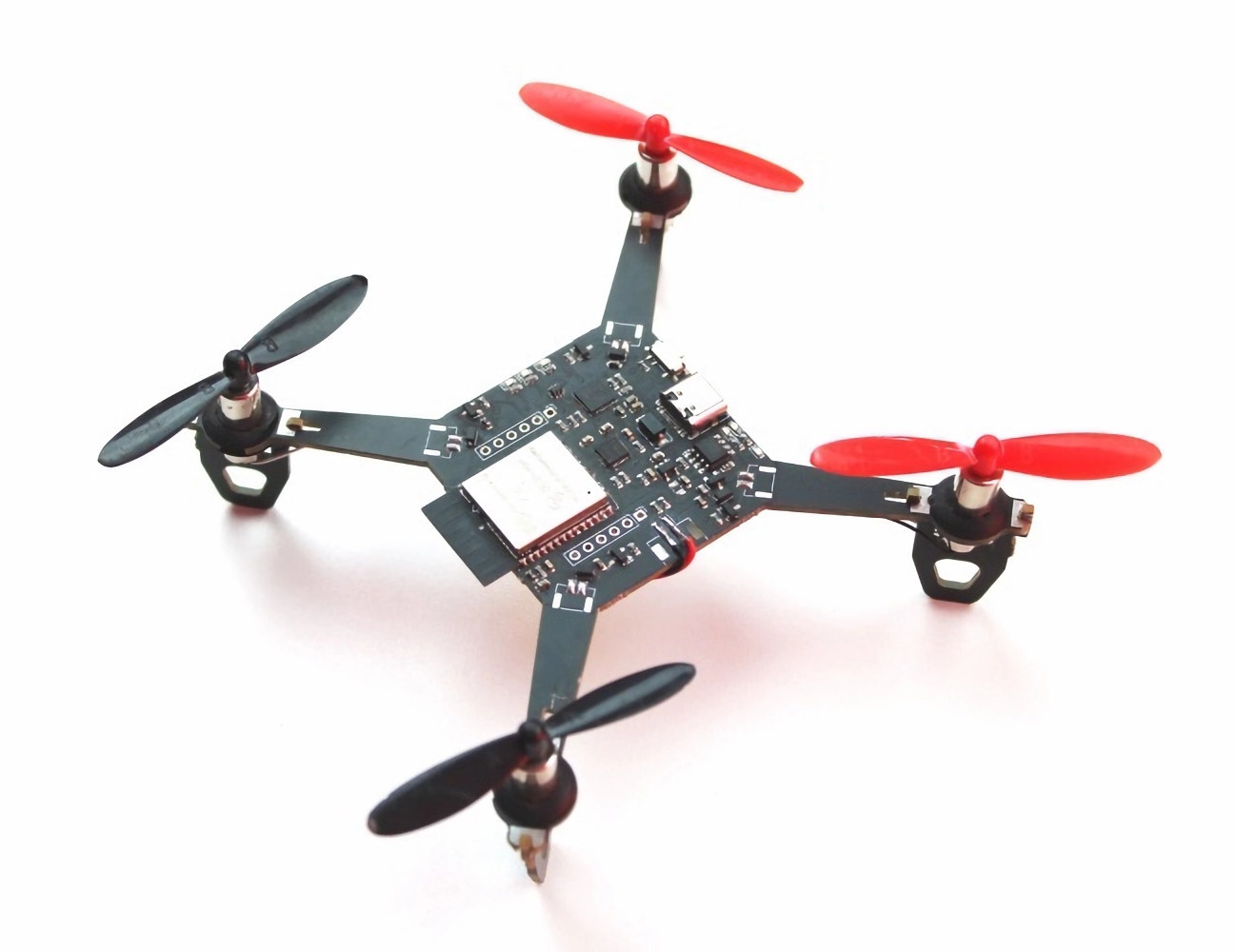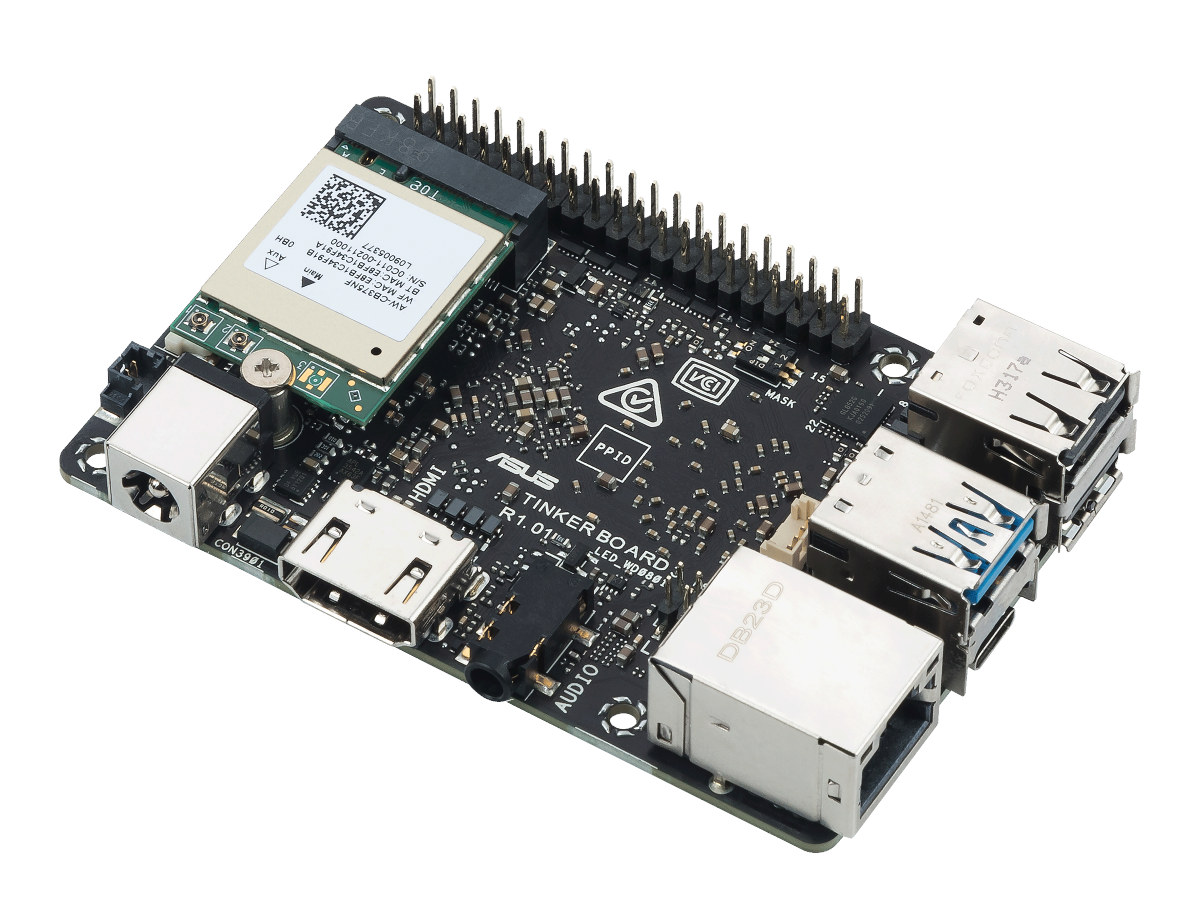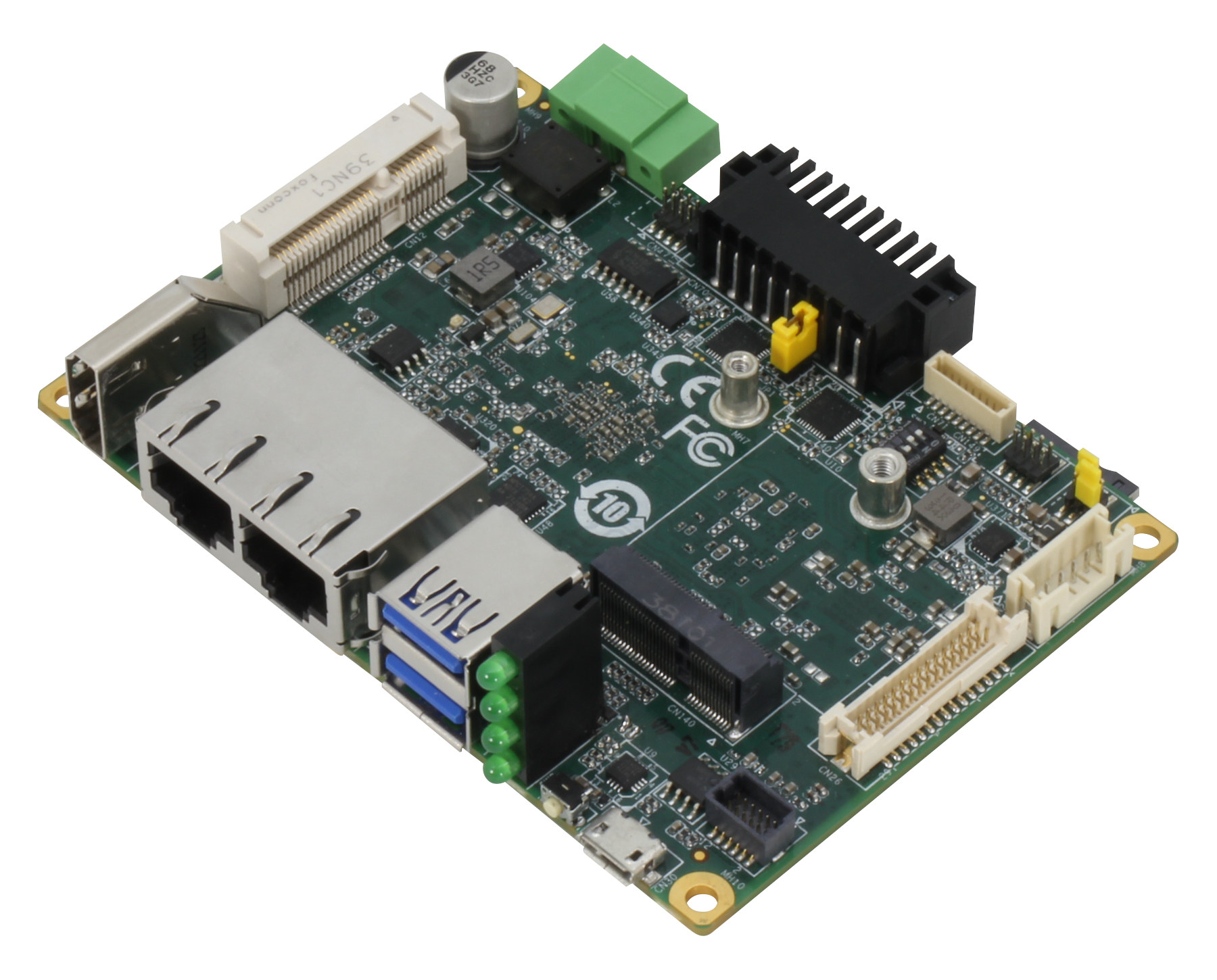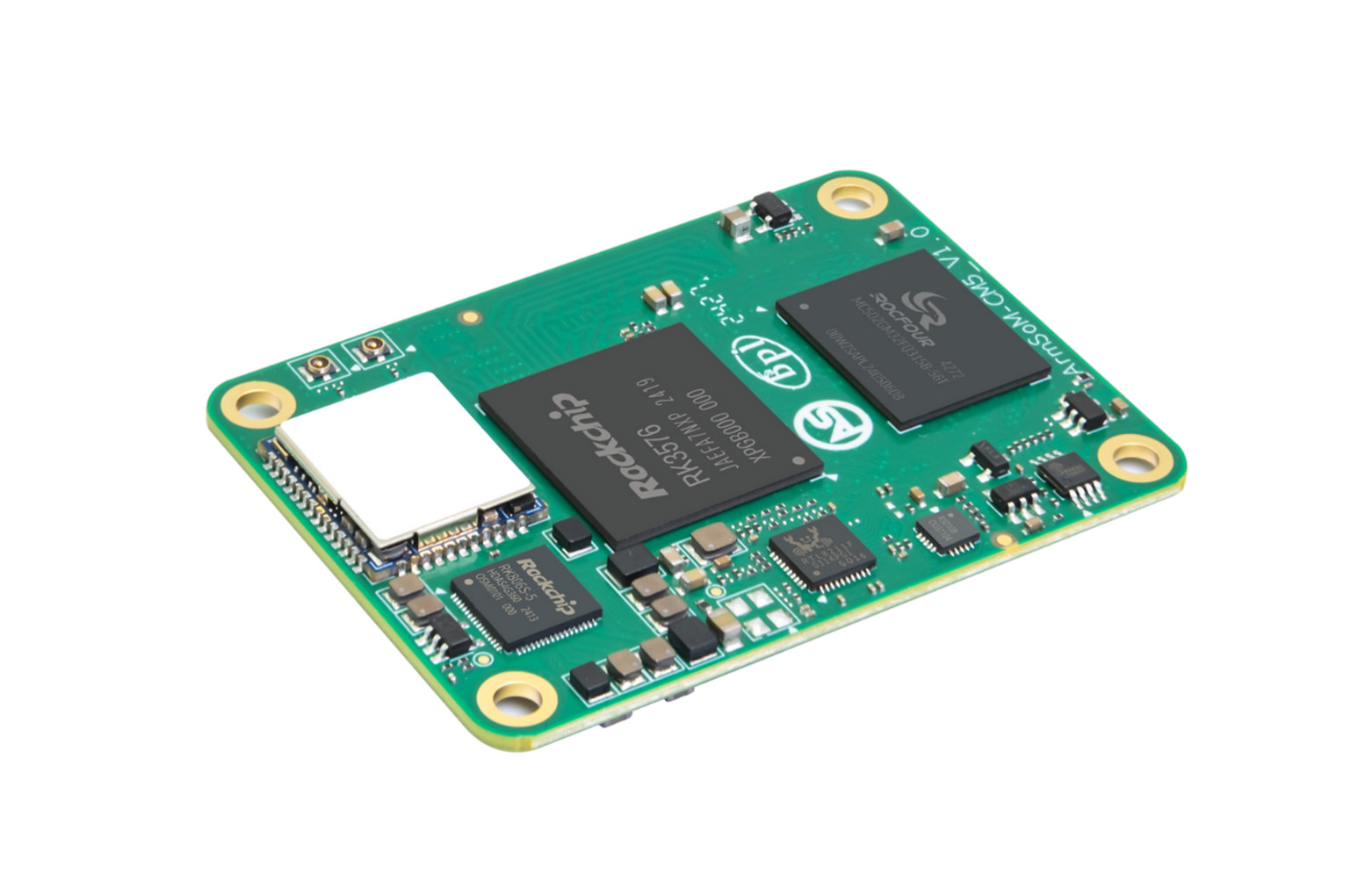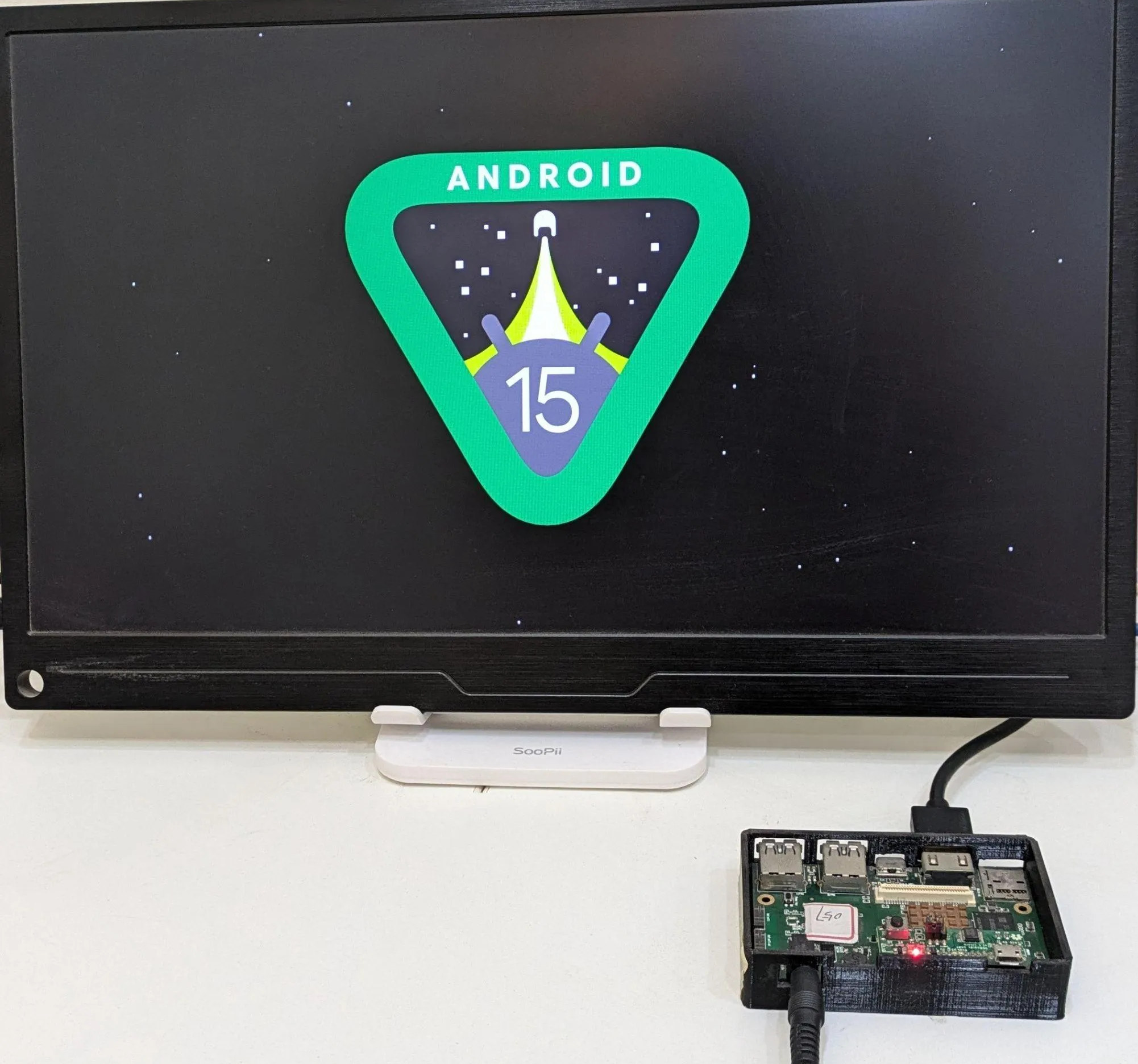Shivam Goyal, going under the Geeky Tronics name, has developed the DigiPort HDMI computer dongle powered by a Raspberry Pi CM4 system-on-module and designed to be connected directly to the back of an HDMI or through an HDMI cable. Since it does not support MHL, the DigiPort also needs a USB-C power source. You can add a keyboard and a mouse through its two USB 2.0 ports or via Bluetooth and network connectivity is managed through WiFi 5 making it a portable computer ready to use out of the box. DigiPort specifications: Supported System-on-Module – Raspberry Pi CM4 SoC – Broadcom BCM2711 quad-core Cortex-A72 processor @ 1.5 GHz System Memory – 1GB to 8GB LPDDR4-3200 SDRAM Storage – 0GB (CM4 Lite), or 8GB to 32GB eMMC flash Wireless – Dual-band WiFi 5 and Bluetooth 5.0 Storage – MicroSD card for OS when using a CM4 Lite module Video Output – […]
Quartz64 Zero – A customizable, cost-optimized Rockchip RK3566T SBC with Raspberry Pi PCIe connector
The Quartz64 Zero is a thinner, cheaper version of the Quartz64 Model B with a Rockchip RK3566T quad-core Cortex-A55 SoC clocked at 1.6 GHz, 1GB LPDDR4, and HDMI and USB ports. The Quartz64 Zero has almost the same design as the Quartz64 with footprints for optional components (more on that later). Two noticeable differences are the presence of the 20-pin PCIe connector compatible with the one found on the Raspberry Pi 5 instead of a mini PCIe socket, and WiFi 6 and Bluetooth 5.4 support instead of just WiFi 5/Bluetooth 5.0. Quartz64 Zero specifications (changes highlighted in bold and strikethrough when items have been removed): SoC – Rockchip RK3566T CPU – Quad-core Cortex-A55 processor up to 1.6 GHz GPU – Arm Mali-G52 GPU supporting OpenGL ES 1.1/2.0/3.2, OpenCL 2.0, Vulkan 1.1 NPU – 0.8 TOPS NPU for AI acceleration (Unclear whether it’s present, not listed in the specs) System Memory […]
LiteWing DIY ESP32 drone costs about $12 to make
Circuit Digest’s LiteWing is a low-cost DIY drone controlled by an ESP32 module, based on a custom PCB and off-the-shelf parts that costs around 1000 Rupees to make, or $12 at today’s exchange rate. The DIY ESP32 drone was designed as a low-cost alternative to more expensive DIY drones that typically cost close to $70. The result is a WiFi drone that fits in the palm and controlled over WiFi using a smartphone. Interestingly it does not include any 3D printed parts as the PCB forms the chassis of the device. DIY ESP32 drone key features and components Wireless module – ESP32-WROOM-32 for WiFi control using a smartphone. Storage – MicroSD card slot Sensors – MPU6050 IMU for stability control. Propulsion 4x 720 coreless motors 2x 55mm propeller type A(CW) 2x 55mm propeller type B(CCW) USB – 1x USB-C port for charging and programming (via CP2102N) Power Management 1300mAh Li-Ion […]
ASUS Tinker Board 3 – A credit-card sized Rockchip RK3566 SBC with 12V to 19V DC input
ASUS Tinker Board 3 is a credit card-sized SBC based on Rockchip RK3566 SoC with an HDMI port, a 3.5mm audio jack, gigabit Ethernet, an M.2 socket for WiFi and Bluetooth, four USB ports, and a 40-pin GPIO header with a layout similar to the Raspberry Pi 3 Model B. When I first wrote about the Tinker Board 3 in 2023, it was a larger (100 x 100 mm) SBC based on Rockchip RK3568 SoC that was later renamed to Tinker Board 3N, now also available as a complete rugged system (more about that in a subsequent post). The new Tinker Board 3 (2024) is a completely different design that competes against Radxa ROCK 3C and Orange Pi 3B boards also based on RK3566 and offered in a business card/credit card form factor similar to the Raspberry Pi 3B. Tinker Board 3 specifications: SoC – Rockchip RK3566 CPU – Quad-core […]
AAEON introduces NXP i.MX 8M Plus Pico-ITX SBC and mini PC designed for Edge AI industrial applications
AAEON PICO-IMX8PL is a Pico-ITX SBC built around the NXP i.MX 8M Plus Edge AI processor which the company has also released in an enclosed form as the SRG-IMX8PL mini-PC. Both are designed for industrial AIoT/IoT applications. The SBC features various connectivity options including dual Gigabit Ethernet, Wi-Fi/Bluetooth, 4G LTE, CAN-FD, Audio, LVDS, and support for popular protocols like Modbus, MQTT, and OPCUA. Whereas the mini PC sacrifices some I/O interfaces and the LVDS display output to enable wall or DIN rail mounting. Both products have wide operating temperature ranges, fanless designs, and compact form factors making them ideal for deployment in harsh industrial environments. All these features make this device useful for industrial automation, transportation, and digital signage. AAEON PICO-IMX8PL Pico-ITX SBC and RG-IMX8PL mini-PC specifications SoC – NXP i.MX 8M Plus AI SoC CPU Quad-core Arm Cortex-A53 processor @ up to 1.6 GHz Arm Cortex-M7 real-time core @ 800 […]
Banana Pi BPI-CM5 Pro – A Rockchip RK3576-powered Raspberry Pi CM4 alternative with up to 16GB RAM, 128GB flash, a 6 TOPS NPU
Banana Pi BPI-CM5 Pro, also called ArmSoM-CM5, is a Rockchip RK3576 system-on-module electrically and mechanically compatible with the Raspberry Pi CM4 while offering up to 16GB LPDDR5 memory, 128GB eMMC flash, and a 6 TOPS AI accelerator embedded into the RK3576 SoC. It comes with a WiFi 6 and Bluetooth 5.3 wireless module, a PMIC for power management, and two 100-pin connectors mostly compatible with the pinout of the Raspberry Pi Compute Module 4. ArmSoM also provides a CM5-IO carrier board to make use of the extra USB 3.0 and PCIe interfaces, and the company told CNX Software they tested the module successfully with the official Raspberry Pi CM4 IO board. Banana Pi BPI-CM5 Pro specifications: SoC – Rockchip RK3576 CPU – 4x Cortex-A72 cores at 2.2GHz, 4x Cortex-A53 cores at 1.8GHz GPU – Arm Mali-G52 MC3 GPU with support for OpenGL ES 1.1, 2.0, and 3.2, OpenCL up to 2.0, […]
Android 15 runs on Linaro development boards based on Qualcomm and HiSilicon chips
Android 15 source code was just pushed to AOSP last week, and Linaro has already ported it to four reference development boards based on Qualcomm and HiSilicon/Huawei chips namely Snapdragon 8 Gen 2 devboard (SM8550-HDK), Qualcomm Robotics Board RB5, Qualcomm Dragonboard 845c (DB845c, aka RB3) and HiSilicon Hikey960. Recent Google Pixel phones can already get Android 15 beta, but that makes the aforementioned development boards some of the first hardware platforms running Android 15 which could be useful to app developers and people wanting to customize Android 15 OS for their target product(s). Android 15 worked on the same day as the release to AOSP thanks to a collaboration between Linaro and Google to make sure reference boards get support as soon as possible, and in this case, we had a “0-day boot” as Linaro puts it. This collaboration started in 2022 with Qualcomm Robotics RB3 and RB5 platforms getting […]
Android 15 source code pushed to AOSP
Android 15 will only become available on supported Pixel devices in the coming weeks, and on other phones in the next couple of months, but Google has already pushed Android 15 source code to AOSP (the Android Open-Source Project). We already documented some of the main changes in Android 15 when the first developer preview was released in February 2024. These included improvements related to privacy and security, the addition of the partial screen-sharing feature, camera and audio improvements, and some performance optimizations. You should be able to retrieve the Android 15 source code from AOSP with the following commands:
|
1 2 |
repo init --partial-clone -b android-15.0.0_r1 -u https://android.googlesource.com/platform/manifest repo sync -c -j8 |
Android 15 is based on Linux 6.6 LTS, so Android 15 SDKs from silicon vendors will likely be offered with Linux 6.6, although I can see Linux 6.1 is also an option. It’s also possible to browse Android 15 source code without downloading several GB of data to your […]


